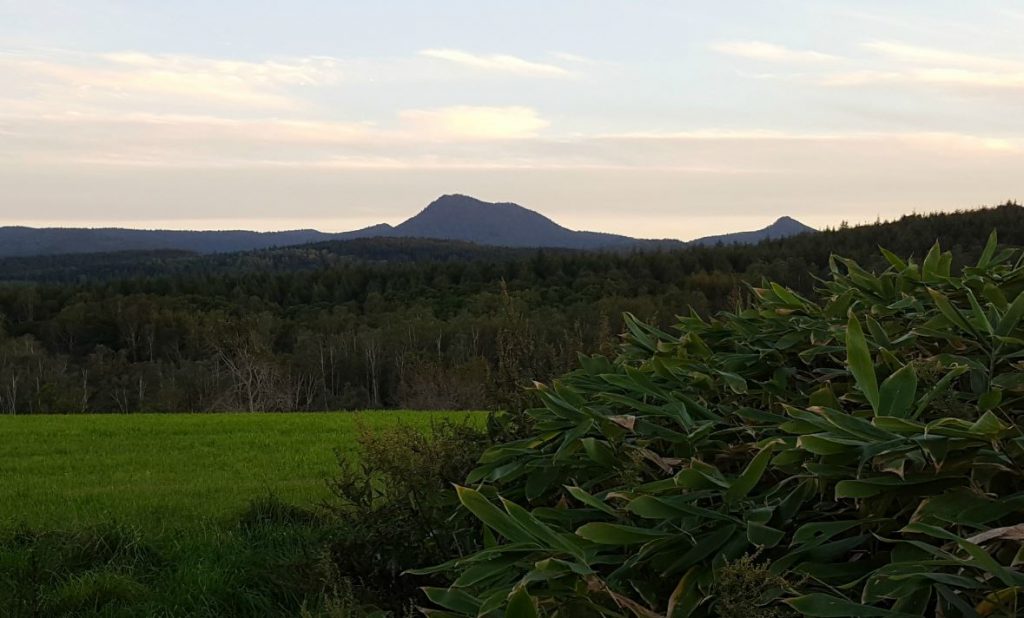Irving puts spotlight on Japanese gold

By Peter Kennedy
This week’s rally in the shares of Irving Resources Inc. [IRV-CSE] has shone the spotlight on Japan, a country that in recent years has not been renowned for its gold mining operations.
This is largely because the Japanese government ordered almost all of the country’s gold mines to close during World War II so mining engineers could be redirected to base metal mines in support of the war effort. After the war, very few of the mines resumed production, resulting in a hiatus in exploration.
However, a combination of the global economic crisis and the Fukushima nuclear power plant disaster in March 2011, created the need for economic stimulus.
Changes to the mining law in 2012 subsequently opened the door for foreign companies like Irving, which could not previously operate independently in Japan.
In May 2016, Irving incorporated a wholly-owned Japanese subsidiary company called Irving Resources Japan Godo Kaisha (GK), a move that enabled the company to acquire and hold exploration and mining rights in Japan.
Three months later, the Irving subsidiary secured the 2.98 km2 Omui mining license on the island of Hokkaido. To augment its land position, Irving has filed 55 prospecting licenses covering an additional 170.56 km2 of prospective ground encompassing the entirety of the northeast-trending Omu volcanic graben, host to multiple high-grade epithermal gold-silver veins exploited at the historic Omui and Hokuryu mines prior to World War II.
On November 5, 2019, Irving shares rose jumping 22.5% to $2.77 after the company said it has encountered significant gold-silver mineralization while drilling on its Omu Gold Project.
In an update, the company said all eight widely-spaced drill holes in the Omu Sinter area of the project encountered significant gold-silver mineralization, including notable vein intercepts in seven of eight holes.
Irving has said it believes the Omu volcanic graben has the potential to host significant undiscovered high-grade veins. In April 2019, Newmont Goldcorp Corp., [NGT-TSX; NEM-NYSE] signalled that it shared that view by acquiring 3.7 million Irving shares for $2.16 a share, marking a total investment of US$6 million.
However, it is clear that exploration in Japan comes with some unique challenges. According to a November, 2018 technical report on the Omu property that was prepared for Irving by U.K-based SRK Exploration Services Ltd., Irving recognizes the social and environmental sensitivities with which exploration and mining must adhere to in Japan.
As a result, the company has developed the following strategy: Irving is aiming to identify and develop mineral deposits that contain gold mineralisation with a high silica content that can be used as a smelter flux/solvent in the flash furnace process, thus negating the need to develop an on-site gold processing plant.
It is a concept that is used at the Hishikari gold mine in Kyushu, Japan, which feeds its gold-bearing ore to the Toyo copper smelter and refinery. The company is mindful that mineralization should also have low sulphur and other deleterious elements that would prevent its use as a smelter flux.
Irving is aware that any deposit should be exploitable by underground methods to reduce the surface footprint of the mine, and be close to port facilities to aid shipping of ore to aid Japanese smelters and refineries.
The report by SRK says Irving understands that working in Japan is founded on building good relationships and trust. To facilitate this understanding, most of the Irving team is Japanese and the company has built a long-standing relationship with Japan Oil, Gas and Metals National Corporation (JOGMEC).
Irving’s flagship Omu property is located in the northeast of Hokkaido Island, about 200 km northeast of the regional capital of Sapporo. The small coastal town of Omu (population 4,600) sits on the property’s eastern boundary.
As of May, 2018, through its wholly-owned Japanese subsidiary, Irving holds 45 hardrock prospecting rights for the exploration for gold, silver, copper, lead, zinc, silicates and feldspar and one hardrock gold-silver silicate mining right.
Together, these rights make up the Omu property and have a combined area of 15,501 hectares. The property contains two historically exploited gold-silver deposits, known as Omui, and Hokuryu. Despite their limited production, it confirms the presence of historically exploitable precious metal mineralisation, SRK said in its report.
“The haitus in exploration and mining suggests that the region is likely to be under-explored and has not been subject to contemporary exploration understanding, or methods,” SRK said.
So far, eight diamond drill holes have been completed at Omui Mine site, totalling approximately 1,300 metres. Irving expects to complete several more drill holes before winter break in mid-December, perhaps totalling 3,000 metres of the planned 5,000-metre Phase One program.
Completion of Phase One is expected by May, 2020, the company has said.
